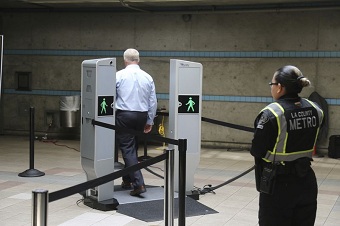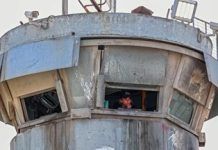New York Mayor Eric Adams is proposing a neat technological solution to the longstanding and messy dilemma of how to keep the city’s public schools safe without over-policing them.
“I’m going to be rolling out a device in a few days that we’re testing that allows us in a humane way to identify guns and weapons,” he said on Feb. 23 about a pilot program at one of the city’s public hospitals using weapons scanners from the security technology company Evolv.
Evolv says its devices are an improvement on traditional metal detectors because they can distinguish weapons from other metal items based on their shape, allowing users to pass through the machines without stopping and avoid emptying their pockets and bags.
“We’re currently in the process of testing it and we’re going to place it in schools so we can do a better job of identifying weapons,” Adams added in remarks that were posted to Evolv’s official Twitter account.
Evolv co-founder Anil Chitkara confirmed the company is running a pilot program at Jacobi Medical Center in the Bronx, which was first reported by Gotham Gazette, but declined to discuss the specifics of other activity in the city, adding only that “our mission is fully aligned with Mayor Adams.”
Adams hasn’t announced any official plans to install the devices in schools, and any new contracts would likely have to open up for bids.
One security expert who has closely watched Evolv, warned that while the company’s technology is real, there are big questions about whether the machines can live up to their lofty sales pitch. He added that the devices have particular vulnerabilities that could undermine their effectiveness in schools — including a tendency to mistake Chromebook laptops for guns because of the shape of the computers’ metal hinges.
Evolv has shot to the top of its field, boasting that its devices have screened more than 200 million people and have been used in marquee venues like professional sports stadiums and museums. Though the company takes pains to distinguish its product from traditional metal detectors, the underlying mechanism is similar, according to IPVM, relying on electromagnetic waves that bounce off metal to trigger an alarm. Evolv’s machines, however, use that information to generate an image, which is then run through a database on a computer attached to the machine to see if it matches the shape of a weapon.








